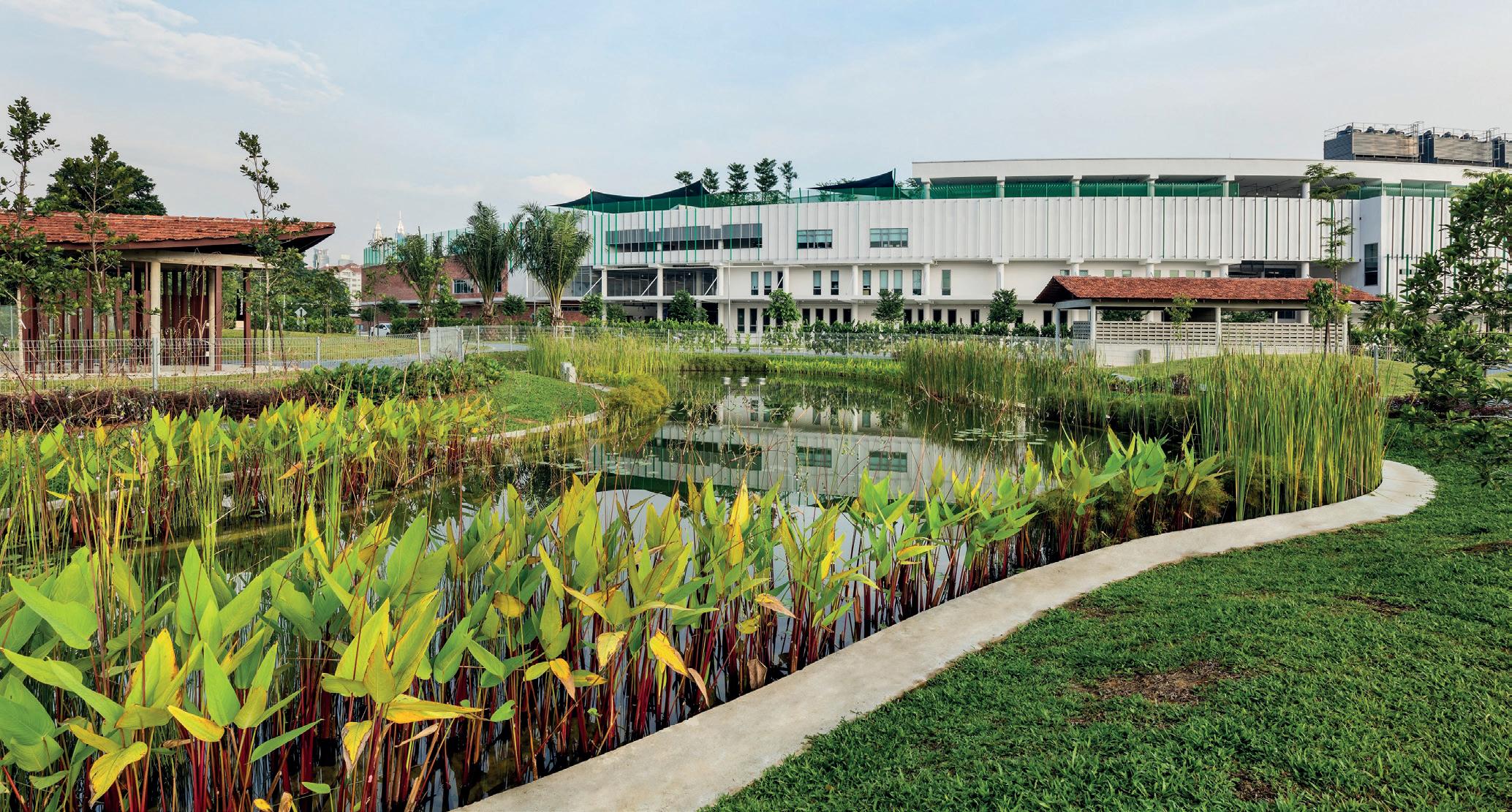
4 minute read
Science Matters: Changing the world as we know it?
Changing the world as we know it?
Richard Harwood looks at the science behind the COVID-19 outbreak
Cities in lockdown, the streets deserted, and all but nonessential shops closed, COVID-19 has already changed the way we live. There are some positive changes which can be enjoyed for a time – the levels of air pollution are falling. A dramatic reduction in noise from planes in the skies above, and traffic going by, means that we can hear birds singing. Though how long can we continue in this way? These feel like ominous and certainly unprecedented times.
The structure of the virus showing the envelope with its glycoprotein ‘spikes’ and the RNA genome

The illustration above, created at the Centers for Disease Control and Prevention (CDC) in the USA, reveals the structure of coronaviruses. Note the glycoprotein spikes on Illustration of the virus causing COVID-19. the outer surface of the virus, which give the look of a crown surrounding the virus when viewed electron microscopically – hence the name. A new coronavirus, named Severe Acute Respiratory Syndrome coronavirus 2 (SARS-CoV-2), has been identified as the cause of the current outbreak of respiratory illness first detected in Wuhan, China in 2019. The illness caused by this virus has been named coronavirus disease 2019 (COVID-19). The characteristic ‘spikes’ are the means by which the virus attaches to the cells of our lung cavities, and also the target of those researchers aiming to develop a vaccine against the virus.
There have been several examples of previous coronavirus outbreaks in the past, the SARS epidemic of 2003 and the MERS (Middle East Respiratory Syndrome) outbreak of 2013 being examples. All have involved viruses that transferred across species to humans. Where did the virus causing the current pandemic originate? How did it get to a food market in Wuhan, China, from where it is thought to have spilled over into humans? The answers to these questions are gradually being pieced together. A recently released study of the viral genetic sequence carried out by infectious disease expert Kristian G Andersen and colleagues at the Scripps Research Institute in La Jolla, California rules out the possibility that it could have been manufactured in a lab or otherwise engineered. Conspiracy theories do not stand up to scrutiny. It seems likely that the original animal reservoir for the virus was bats. The results from Andersen’s team, and those of Chinese studies, show that the sequence of SARS-CoV-2 is similar to other coronaviruses that infect bats. Since other bat coronaviruses have crossed over to humans
via an intermediate animal host, it seems likely that this one did too. It appears that the intermediary was probably the pangolin, a scaly mammal sold in Chinese ‘wet’ markets (those that sell live animals, fresh meat, fish, seafood and other produce). China has now banned such markets, but that ban probably needs to be more extensive. There are wet markets throughout many other Asian countries and much of sub-Saharan Africa.
However, that is only part of the story; the second interface is the transfer of the virus to humans. Both interfaces were required for the pandemic to ignite. So where and how did the spillover from the bat to the pangolin – or other wild or semi-wild intermediate host – occur? Are there environmental pressures on natural systems that are bringing wildlife into closer proximity, both with other species and with humans, creating opportunities for pathogens to get into new hosts?
The United Nations environment chief, Inger Andersen, commented recently that ‘never before have so many opportunities existed for pathogens to pass from wild and domestic animals to people. Our continued erosion of wild spaces has brought us uncomfortably close to animals and plants that harbour diseases that can jump to humans.’ Aaron Bernstein of the Harvard School of Public Health has also commented that ‘the separation of health and environmental policy is a dangerous delusion. Our health entirely depends on the climate and the other organisms we share the planet with.’
We had warnings from studies of previous epidemics. In the period of economic and social recovery post-COVID-19 the sheer depth of the re-structuring necessary globally will hopefully generate solutions and strategies to begin to find answers to the major problems that face us for the future. Peter Frankopan (Professor of Global History at Oxford University) has written a lengthy essay in The Times (UK; 28 March 2020) entitled ‘Pandemics are terrifying but they can make the world better’. His essay concludes as follows:
‘[I]t might be that the difficulties we are all facing do not just turn us into a more compassionate global community but one that recognises that closer co-operation is needed. If that happens, one beneficiary will be the climate: after all, the world’s lungs are already breathing more easily thanks to the collapse of industrial production. Who is to say that this pandemic does not provide a turning point in world history. With so many pessimists predicting doom and gloom, here’s to a ray of sunshine and hope at a time that is difficult, even if it is not, in fact, unprecedented.’
Dr Richard Harwood is an education consultant (scientific and international education).
Email: rickharwood@btinternet.com
The leading global guide to international schools – are you featured? John Catt’s Guide to International Schools and www.internationalschoolsearch.com

• Check your school’s listing and let us know of any updates needed • Promote your school with up to 800 words, logo, photo and social media links • Feature on new ‘country profile’ sections, exploring the international education sector across the globe • Read news about international schools and articles from school leaders, teachers, universities, consultants and associations










